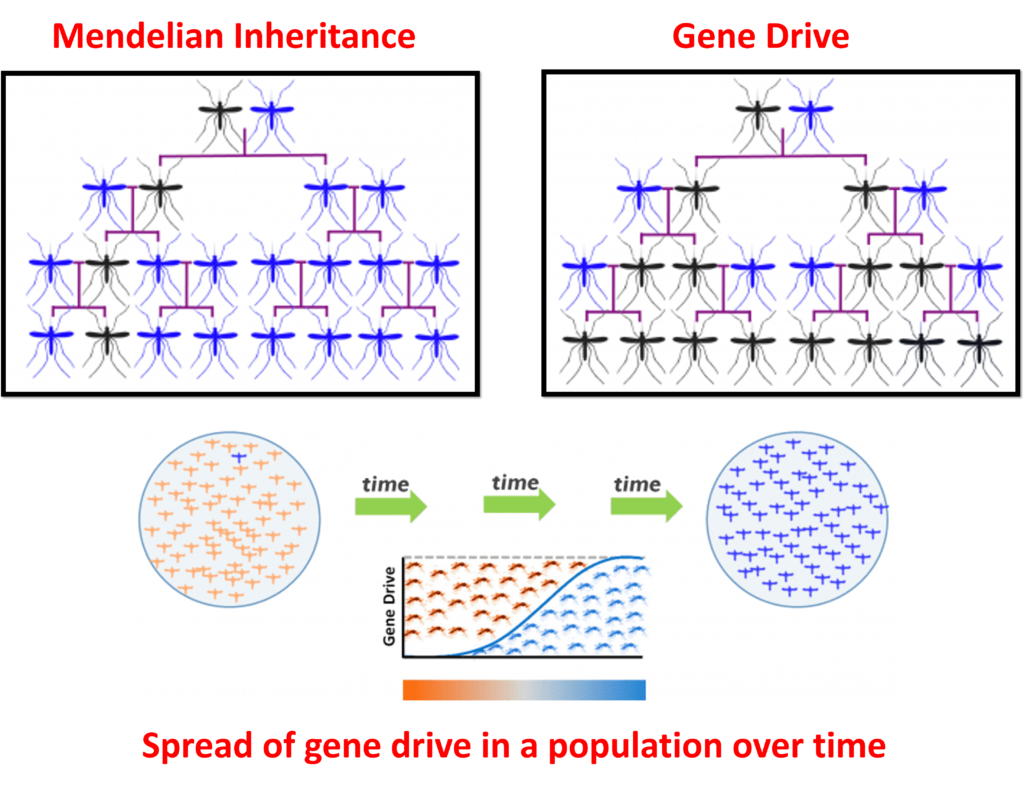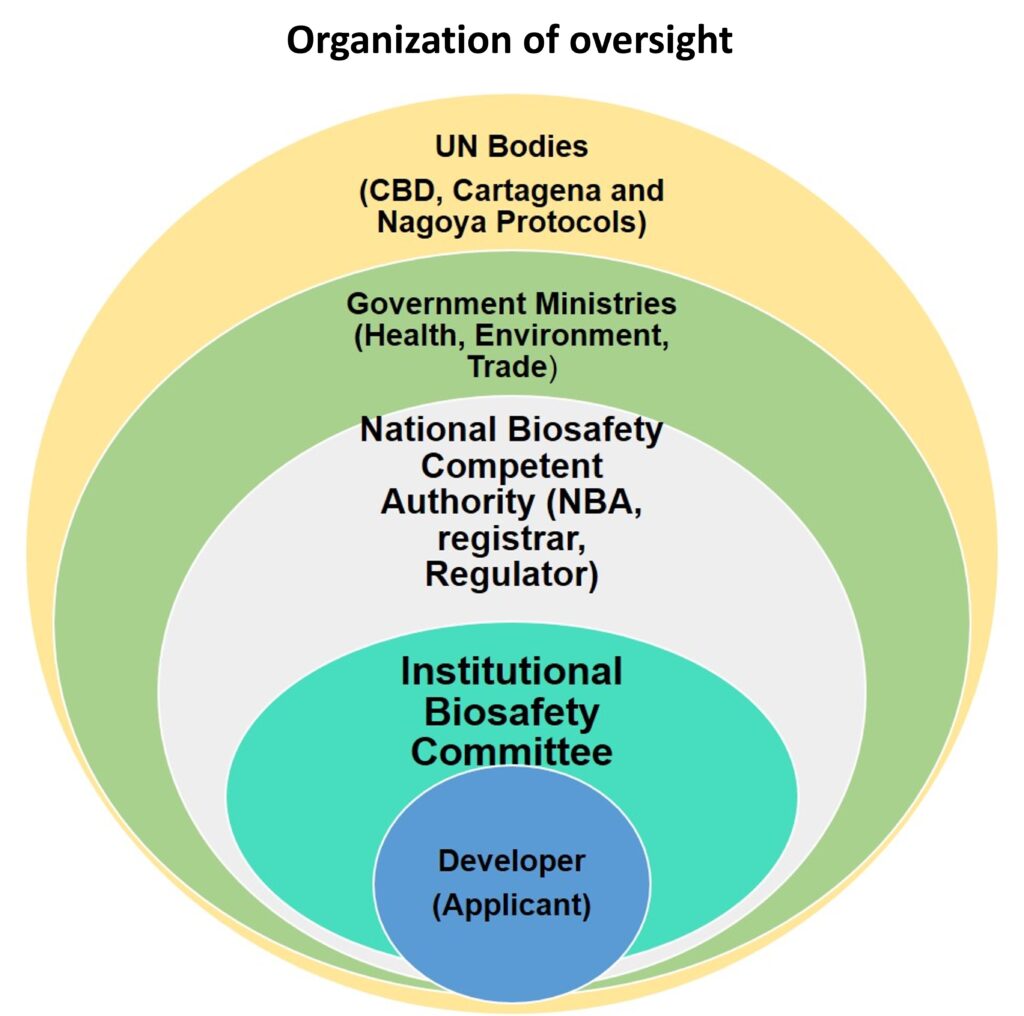ENVIRONMENTAL RISK ASSESSMENTS FOR GENE DRIVE TECHNOLOGIES
Introduction – What is gene drive?
Gene drives are genes in sexually reproducing organisms that transmit preferentially (i.e., in a non-Mendelian fashion) to the next generation at the expense of other forms of the same gene. So, transmission frequency of the form that exhibits the phenomenon of “drive” is typically greater than 50% and often approaches 100%. Genetic technologies attempt to couple this driving behavior with engineered traits to allow rapid population level spread. Such engineered organisms could be useful for driving traits for vector control rapidly through a mosquito population to impact human health by eliminating disease. Being a new and emerging technology there are aspects of governance to be addressed.

Risks associated with Gene Drives
The characteristic feature of gene drives to spread at greater than 50% frequency makes them attractive as genetic solutions for complex problems like control of vector-borne diseases, invasive species, and agricultural pests. However, this preferential inheritance pattern poses challenges such as:
- Challenge of ensuring containment especially during research and development in an area with conspecifics that can interbreed.
- Difficult to stop or recall gene drive containing organisms once released into the environment.
- Inability to contain or restrict gene drive containing organisms to prevent spread across national borders.
- Inability to predict all potential ecological effects due to innate complexities of ecosystems.
Governance of risks presented by Gene Drives
- Assessment of potential risks due to gene drive organisms testing and use will follow Annex III of the Cartagena Protocol on Biosafety for countries that are Parties to the same or equivalent established risk assessment paradigms.
- Risk governance approaches should be capable of addressing the uncertainty inherent in new technologies such as gene drive. Regulatory frameworks should be suitable or capable of appropriate modification for assessment of gene drive organisms.
- A risk assessment protocol that is procedural and assists regulatory agencies and developers to conduct risk analyses given the complexity and uncertainty of gene drive organisms is ideal.
- Existing regulatory frameworks typically restrict authority to within national boundaries. However, these frameworks may need adapting given the expectation of potential transboundary movement of gene drive organisms.
- Governance of gene drive research is done at national levels. Research institutions should comply with national laws and regulations to ensure research meets these legal requirements.

New challenges to existing biosafety frameworks
- Ensuring the stakeholder input is sought and incorporated into decision-making.
- Ensuring risk assessment is science based and supports decision-making.
- Regulatory frameworks are adaptable to allow oversight of gene drive organisms that could spread beyond political boundaries.
Risk Analysis
- A systematic inquiry into the nature of uncertainty, and limitations of evidence to assess risk of defined outcomes occurring.
- New technologies can create and reduce risks. Structured processes like risk assessment allow consideration of plausible pathways to potential harm, likelihood of harm and their consequences.
- Identification of critical steps in adverse outcome pathways allow streamlining data collection and research design.
- Allows development of risk mitigation plans to address critical risk areas.
Stakeholder Engagement
- Stakeholder engagement is crucial and, in many countries, required by law for genetically modified organisms such as gene drive organisms.
- Engagement is important to facilitate co-development and knowledge sharing, for awareness, and to allow concerns to be heard and addressed during research design and follow-on activities.
- Engagement should be at levels appropriate to the planned activities and use of the organisms- local, national, and regional.
- Certain groups may be considered critical and must be included in engagement efforts.
